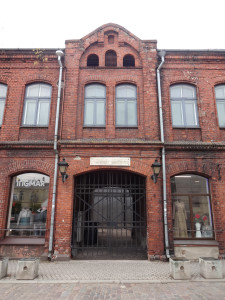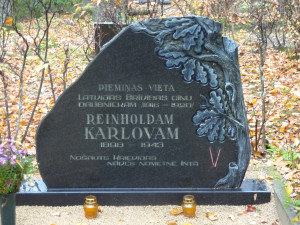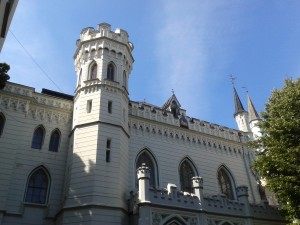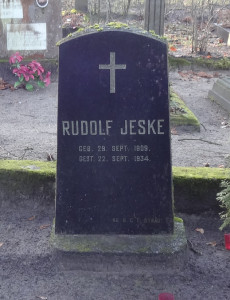This is the third post in a series on debunking myths about Latvian genealogy. See the first post about records availability here and the second post about name spelling here.
Today’s myth: I found someone with the same surname. That must mean we’re related!
Like the other myths we’ve talked about so far, this myth is very wrong. This is because of the way surnames came about in Latvia. In this post, I will describe this surname acquisition process, and outline the criteria to watch for to determine whether people with the same surname are related.
Prior to the 19th century, most Latvians did not have surnames. This is because most Latvians were peasants, and peasants were serfs – tied to the manor and farm that they worked on, therefore surnames were not deemed necessary. Allegedly Latvians did have surnames in the 17th century under Swedish rule while serfdom was abolished, but I’ve only heard apocryphal stories and no firm documents confirming this.
This means that most people acquired surnames after serfdom was abolished – 1817 in Kurzeme, 1819 in Vidzeme and 1861 in Latgale (special notes on Latgale and Latgalian surnames below). Even though this is when surnames would have been acquired, they only start appearing in records in 1826 for Vidzeme and 1834 in Kurzeme – and sometimes not even reliably, particularly in Kurzeme, where some records don’t reliably record surnames even into the 1850s.
But where did surnames come from? If they had to appear in the 19th century, what was their source?
The easiest and simplest source for surnames was farm names – people were often referred to in connection with their farm name anyways, so many farm names became surnames. This is how the most common Latvian surnames occurred – BÄ“rziņš, Kalniņš, Ozoliņš – all from very common farm names BÄ“rziņi, Kalniņi, Ozoliņi (the plural forms thereof, being diminutives of “birches”, “hills” and “oaks”). Most estates had farm names of this sort, so this surname could pop up on almost every estate.
After nature names (which were the most common source of farm names), people may have chosen occupational names, if they had a special trade of some kind. Occupational surnames aren’t as common in Latvia as in other countries, but some, such as KalÄ“js (smith), Mucenieks (cooper) and MÅ«rnieks (mason) are relatively common. Also remember these names could appear in their German, Russian, Polish or Estonian variants as well! People could also acquire surnames from some sort of personal trait (relating to height, weight, or if they had some sort of disability or unique physical characteristic) or where they lived. They could also just pick something at random that they liked (I still have no idea where my family name Baburs came from – this is definitely NOT a Latvian name, but it belonged to a very Latvian family line from southeast of RÄ«ga).
Were there rules regarding surname acquisition? Yes. Surnames could not be used by two unrelated families on the same estate. The patriarch of a family would give the same surname to all of his children, but if the patriarch was deceased, brothers were not obligated to choose the same surname (though many did, or variations on a theme – as an example, in those early days of surname acquisition, my paternal line had the surname Celmiņš, but one brother went with the alternative diminutive CelmÄ«tis for awhile – but then went back to Celmiņš). Latvians were also supposed to have Latvian names, and non-diminutives – though this rule was not particularly adhered to. Latvians often chose diminutives over non-diminutives (though keep in mind that records could record people as either, depending on how stringent the record-keepers were with this rule). Since many Latvians have Germanic or Slavic names, the former part of this rule was also not particularly adhered to either – though in some cases, the manor lords were responsible, if they didn’t want to bother with a bunch of surnames they weren’t familiar with, they would give peasants Germanic or Slavic surnames instead.
What was the surname acquisition procedure? Tales tell that there would be a big meeting on the estate, and then the manor lord would ask each patriarch to come forward and announce the name they wanted recorded for their family. If they could not think of one, the manor lord would assign one. This is where a number of unusual and rude surnames came about – names such as Ubags (beggar), TupÄ“tÄjs (squatter), Dumpis (rebellion) and so on. If someone was particularly obtuse, they could even end up with a name like “Negribs” (Doesn’t Want – presumably said by someone who did not want a surname, and this was recorded in its place and thus became a surname). But if someone was creative, they could end up with an unusual and creative surname – for example, ZeltzaÄ·is (Gold Hare), Dzelzgalvis (Iron Head), UpeslÄcis (River Bear), LÄÄkalns (Bear Hill), etc.
So what does this all mean for people with the same surname? If the surname is a popular one – any tree, plant or animal – then the chances of being related to another person with the same surname is very unlikely. If their family is from the same parish, then the chances of being related increase, but remember, after the 1820s people could also move around a bit more freely, which means that people with the same surnames could now end up on the same estate and not be related. So you would need to trace your families back to see if there is a family relationship.
If your surname is more unusual, you still need to be careful – even uncommon surnames could pop up independently in different parts of the country (you just need to look at the names in the Latvian Surname Project to see proof of that). Again, it all comes down to parish. The closer the parishes, the greater the chance of a family relationship. But the only way to definitively prove it is by doing the research to link family trees (and a DNA test can help too).
Now, a special note regarding surnames in Latgale. Many Latgalian Catholics had surnames prior to serfdom being abolished in 1861, but not all did. So do not be surprised if you see surnames in records before that (be happy!). On the other hand, there’s the added difficulty where the estate rules from Vidzeme and Kurzeme did not apply – often an entire hamlet of unrelated families could be given the same surname. In such a case, it is rare that the surname will repeat elsewhere in the province, so there is that advantage, but there is still the task of separating out the different families, which might not be easy, especially since there are good chances that they will also marry into each other. But once all of the families are charted using the old records, the task becomes easier.
Do you know how common your family names are? If you don’t, my Latvian Surname Project can give you an idea! If your name doesn’t appear there, chances are that it is not very common, since most common surnames are listed by now. You can also look your name up in Periodika to see how often it appears (though be cautious if the name is also a place name, farm name or common word – then you might get false positives!).
This post and others like it are made possible by my patrons on Patreon. If you find the information on my site valuable, please consider becoming my patron too!




